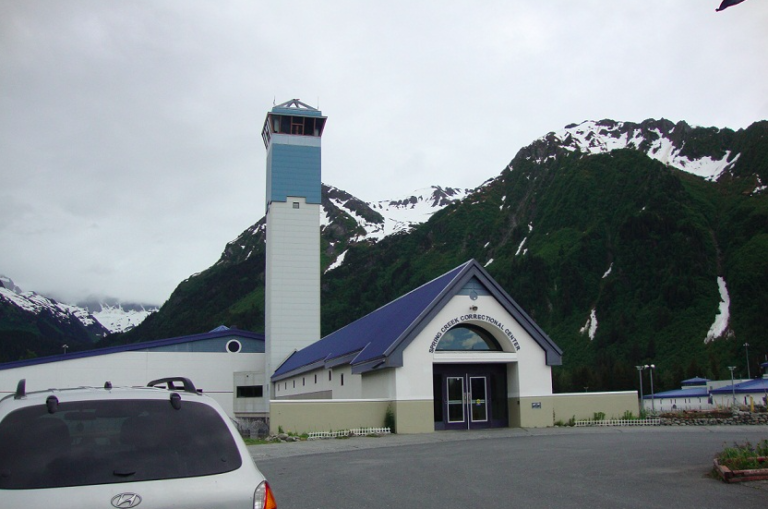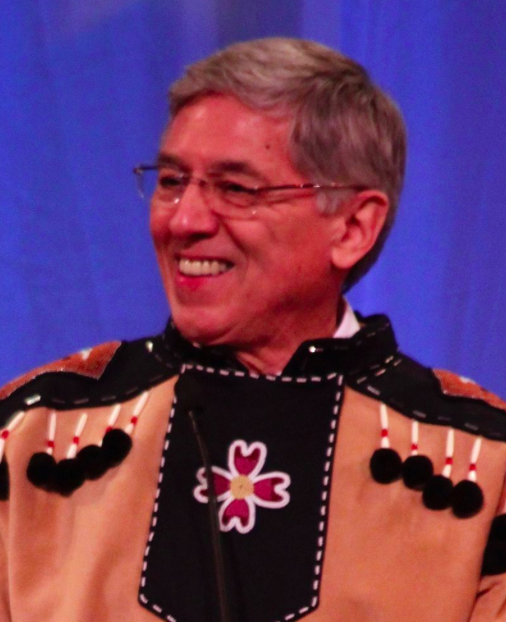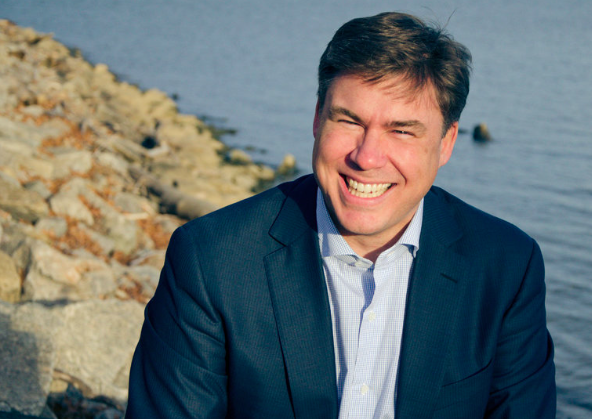Well, thanks a lot. And it is a more serious note. So I just wanted to perhaps make more of a statement than an — give more an explanation than a — what amounts to be a traditional press interaction.Most Americans don’t know what happens when we lose one of our soldiers, sailors, Airmen, Marines or Coast Guardsmen in combat. So let me tell you what happens. Their buddies wrap them up in whatever passes as a shroud, puts them on a helicopter as a routine and sends them home.
Their first stop along the way is when they’re packed in ice, typically at the airhead, and then they’re flown to usually Europe, where they’re then packed in ice again and flown to Dover Air Force Base. Where Dover takes care of the remains, embalms them, meticulously dresses them in their uniform with the — with the medals that they’ve earned, the emblems of their service, and then puts them on another airplane linked up with a casualty officer escort that takes them home.
A very, very good movie to watch, if you haven’t ever seen it, is “Taking Chance,” where this is done in a movie, HBO setting. Chance Phelps was killed under my command right next to me. And it’s worth seeing that, if you’ve never seen it. So that’s the process.
While that’s happening, a casualty officer typically goes to the home very early in the morning and waits for the first lights to come on. And then he knocks on the door, typically the mom and dad will answer. Wife. And if there is a wife, this is happening in two different places. If the parents are divorced, three different places. And the casualty officer proceeds to break the heart of a family member and stays with that family until — well, for a long, long time. Even after the internment. So that’s what happens. Who are these young men and women? They are the best 1 percent this country produces.
Most of you, as Americans, don’t know them. Many of you don’t know anyone who knows any one of them. But they are the very best that this country produces. And they volunteer to protect our country when there’s nothing in our country anymore that seems to suggest that selfless service to the nation is not only appropriate, but required. But that’s all right.
Who writes letters to the families? Typically the company commander. In my case, as a Marine, the company commander, battalion commander, regimental commander, division commander, secretary of defense, typically the service chief, commandant of the Marine Corps and the president typically writes a letter.
Typically, the only phone calls a family receives are the most important phone calls they can imagine, and that is from their buddies. In my case, hours after my son was killed, his friends were calling us from Afghanistan, telling us what a great guy he was.
Those are the only phone calls that really matter. And, yes, the letters count a degree, but there’s not much that really can take the edge off what a family member is going through.
So, some presidents have elected to call. All presidents, I believe, have elected to send letters. If you elect to call a family like this, it is about the most difficult thing you can imagine. There’s no perfect way to make that phone call.
When I took this job and talked to President [Donald] Trump about how to do it, my first recommendation was he not do it, because it’s not the phone call that parents, family members are looking forward to. It’s nice to do, in my opinion, in any event.
He asked me about previous presidents, and I said I can tell you that President [Barack] Obama, who was my commander-in-chief when I was on active duty, did not call my family. That was not a criticism. That was just to simply say, I don’t believe President Obama called. That’s not a negative thing.
I don’t believe President [George W.] Bush called in all cases. I don’t believe any president, particularly when the casualty rates are very, very high, that presidents call.
But I believe they all write. So, when I gave that explanation to our president three days ago, he elected to make phone calls in the case of the four young men who we lost in Niger at the earlier part of this month. And then he said, you know, what — how do you make these calls? If you’re not in the family, if you have never worn the uniform, if you have never been in combat, you can’t even imagine how to make that call.
I think he very bravely does make those calls.
The call in question that he made yesterday, day before yesterday now, were to four family members, the four fallen. And, remember, there’s a next of kin designated by the individual. If he’s married, that’s typically the spouse. If he’s not married, that’s typically the parents, unless the parents are divorced, and then he selects one of them. If he didn’t get along with parents, he will select a sibling.
But the point is, the phone call is made to the next of kin, only if the next of kin agrees to take the phone call. Sometimes, they don’t.
So, a pre-call is made. The president of the United States or the commandant of the Marine Corps or someone would like to call. Will you accept the call? And, typically, they all accept the call.
So, he called four people the other day, and expressed his condolences in the best way that he could.
And he said to me, what do I say? I said to him, “Sir, there’s nothing you can do to lighten the burden on these families. But let me tell you what I tell them. Let me tell you what my best friend, Joe Dunford, told me, because he was my casualty officer. He said, ‘Kel, he was doing exactly what he wanted to do when he was killed. He knew what he was getting into by joining that 1 percent. He knew what the possibilities were, because we’re at war. And when he died’ — and the four cases we’re talking about Niger, in my son’s case, in Afghanistan — ‘when he died, he was surrounded by the best men on this earth, his friends.'”
That’s what the president tried to say to four families the other day.
I was stunned when I came to work yesterday morning and brokenhearted at what I saw a member of Congress doing, a member of Congress who listened in on a phone call from the president of the United States to a young wife, and in his way tried to express that opinion that he’s a brave man, a fallen hero. He knew what he was getting himself into, because he enlisted. There’s no reason to enlist. He enlisted. And he was where he wanted to be, exactly where he wanted to be, with exactly the people he wanted to be with when his life was taken. That was the message. That was the message that was transmitted.
It stuns me that a member of Congress would have listened in on that conversation, absolutely stuns me. And I thought at least that was sacred. You know, when I was a kid growing up, a lot of things were sacred in our country. Women were sacred, looked upon with great honor. That’s obviously not the case anymore, as we see from recent cases. Life, the dignity of life was sacred. That’s gone. Religion, that seems to be gone as well. Gold Star families, I think that left in the convention over the summer.
I just thought the selfless devotion that brings a man or woman to die on the battlefield, I just thought that that might be sacred.
And when I listened to this woman and what she was saying and what she was doing on TV, the only thing I could do to collect my thoughts was to go and walk among the finest men and women on this earth. And you can always find them, because they’re in Arlington National Cemetery. I went over there for an hour-and-a-half, walked among the stones, some of whom I put there, because they were doing what I told them to do when they were killed.
I’ll end with this. And in October — or April, rather, of 2015, I was still on active duty. And I went to the dedication of the new FBI field office in Miami. And it was dedicated to two men who were killed in a firefight in Miami against drug traffickers in 1986 by the name of Grogan and Duke. Grogan almost retired, 53 years old. Duke, I think less than a year on the job. Anyways, they got in a gunfight and they were killed. Three other FBI agents were there, were wounded, now retired.
So, we go down. Jim Comey gave an absolutely brilliant memorial speech to those fallen men and the — and to all of the men and women of the FBI who serve our country so well and law enforcement so well. There were family members there. Some of the children that were there were only three or four years old when their dads were killed on that street in Miami-Dade. Three of the men that survived the fight were there and gave a rendition of how brave those men were and how they gave their lives.
And a congresswoman stood up, and in a long tradition of empty barrels making the most noise, stood up there in all of that and talked about how she was instrumental in getting the funding for that building, and how she took care of her constituents because she got the money, and she just called up President Obama, and on that phone call, he gave the money, the $20 million, to build the building, and she sat down. And we were stunned, stunned that she’d done it. Even for someone that is that empty a barrel, we were stunned.
But, you know, none of us went to the press and criticized. None of us stood up and were appalled. We just said, “OK, fine.”
So, I still hope, as you write your stories, and I appeal to America, that let’s not let this maybe last thing that is held sacred in our society, a young man, a young woman going out and giving his or her life for our country, let’s try to somehow keep that sacred. But it eroded a great deal yesterday by the selfish behavior of a member of Congress.
So, I’m willing to take a question or two on this — on this topic. Let me ask you this. Let me ask you this.
Is anyone here a Gold Star parent or sibling? Does anyone here know a Gold Star parent or sibling?
OK. You get the question.
REPORTER QUESTION: Thank you, Gen. Kelly. First of all, you have a great deal respect, semper fi, for everything that you have ever done, but if we could take this a bit further, why were they in Niger? What was — we were told they weren’t in armored vehicles and there was no air cover. So, what are the specifics about this particular incident, and why were we there, and why are we there?
Well, I would start by saying there is an investigation.
Let me back up and say, the fact of the matter is, young men and women that wear our uniform are deployed around the world, and there are tens of thousands, and near the DMZ, in North Korea, and in Okinawa ready to go — in South Korea — in Okinawa, ready to go, all over the United States, training, ready to go. They’re all over Latin America. Down there, they do mostly drug interdiction working with our partners, our great partners, the Colombians, the Central Americans, the Mexicans.
You know, there’s thousands. My own son right now in — back in the fight for his fifth tour in — against ISIS. There’s thousands of them in Europe, acting as a deterrent, and throughout Africa, and they’re doing the nation’s work there, and not making a lot of money, by the way, doing it. They love what they do.
So, why were they there? They’re there working with partners, local Africa — all across Africa in this case, Niger, working with partners, teaching them how to be better soldiers, teaching them how to respect human rights, teaching them how to fight ISIS, so that we don’t have to send our soldiers and Marines there in their thousands. That’s what they were doing there.
Now, there is an investigation. There’s always an — unless it’s a very, very conventional death in a conventional war — there’s always an investigation. Of course, that operation is conducted by AFRICOM that is — of course, works directly for the secretary of defense. There is a — I talked to Jim Mattis this morning. I think he made statements this afternoon. There’s an investigation ongoing. An investigation doesn’t mean anything was wrong. An investigation doesn’t mean people’s heads are going to roll.
The fact is, they need to find out what happened and why it happened. But, at the end of the day, ladies and gentlemen, you have to understand that these young people, and sometimes old guys, put on the uniform, go to where we send them to protect our country. Sometimes, they go in large numbers to invade Iraq and invade Afghanistan. Sometimes, they’re working in small units, working with our partners in Africa, Asia, Latin America, helping them be better. But, at the end of the day, they’re helping those partners be better at fighting ISIS in North Africa to protect our country, so that we don’t have to send large numbers of troops.
Any other — someone who knows who knows a Gold Star fallen person.
John.
REPORTER QUESTION: General, thank you for being here today, and thank you for your service. There has been some talk about the timetable of the release of the statement about the — I think, at that point, it was three soldiers killed in Niger. Can you talk us through the timetable of your release that information? And what part did the fact that a beacon was pinging during that time have to do with the release of the statement? And were you concerned that divulging information early might jeopardize a soldier?
Yes, first of all, that’s — we are at the — at the highest level of the U.S. government. The people that will answer those questions will be the people at the other end of the military pyramid. I’m sure they’re — the special forces group is conducting — I know they’re conducting an investigation. That investigation, of course, under the auspices of AFRICOM ultimately will go to the Pentagon.
I have read the same stories you have. I actually know a lot more than I’m letting on, so I’m — but I’m not going to tell you. There is an investigation being done, but, as I say, the men and women of our country that are serving all around the world — I mean, what the hell is my son doing back in the fight? He’s back in the fight because, working with Iraqi soldiers who are infinitely better than they were years ago, to take ISIS on directly, so that we don’t have to do it. Small numbers of Marines where he is, working alongside those guys. That’s why they’re out there, whether it’s Niger, Iraq, or whatever. We don’t want to send tens of thousands of American soldiers and Marines in particular to go fight.
I will take one more, but it’s going to be from someone who knows….
REPORTER QUESTION: General, when you talk about Niger, sir, what is your intelligence telling you about the Russian connection with them and what’s — the stories that are coming out now are….
That’s a question for NORTHCOM or for — not NORTHCOM — or — AFRICOM or DOD.
Thank you very much.
As I walk off the stage, understand there’s tens of thousands of American kids, mostly, doing the nation’s bidding all around the world. They don’t have to be in uniform. You know, when I was a kid, every man in my life was a veteran, World War II and Korea, and there was the draft. These young people today, they don’t do it for any other reason than their selfless — sense of selfless devotion to this great nation.
We don’t look down upon those of you that haven’t served. In fact, in a way we feel a little bit sorry, because you will never have experienced the wonderful joy you get in your heart when you do the kind of things our service men and women do, not for any other reason than they love this country.



